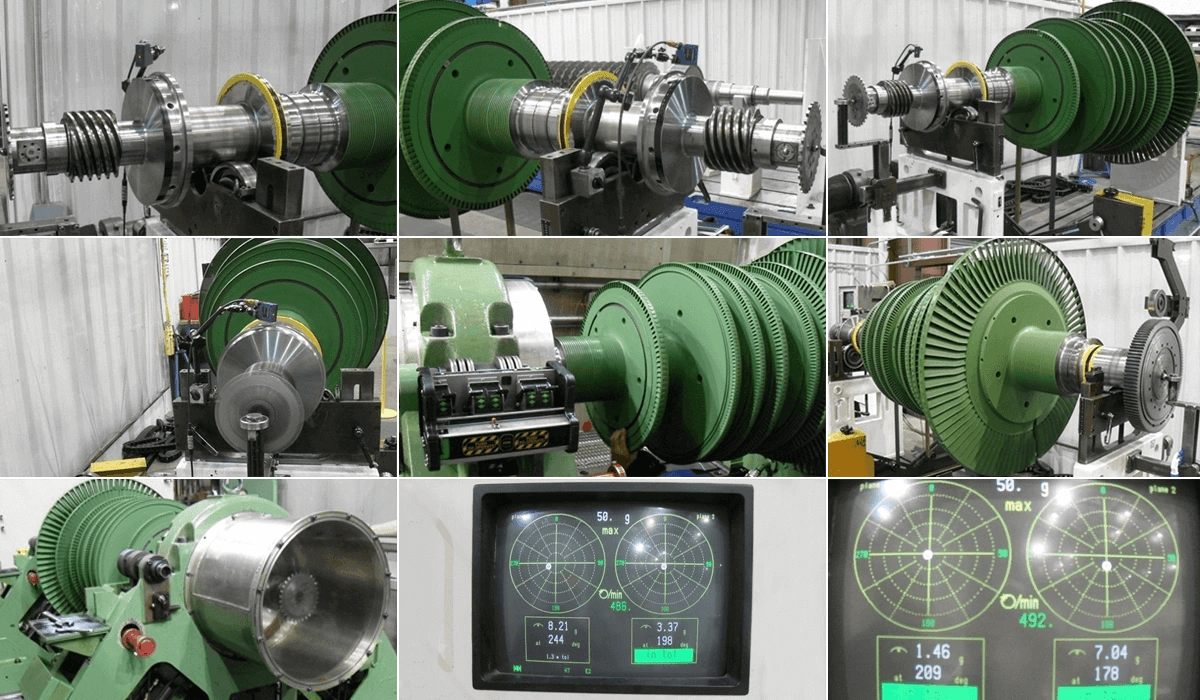Steam Turbine Rotor Shaft
About the commodity Steam Turbine Rotor Shaft, Decundi Inspection Services personnel have performed inspections during the manufacture of the new Steam Turbine Rotor Shaft and also refurbishing of Steam Turbine Rotor Shaft. The narrative and pictures herein pertain to the refurbishing of the Steam Turbine Rotor Shaft. Decundi's capabilities include carrying out inspections during the refurbishing of the Steam Turbine Rotor Shaft, including visual inspection of the Rotor in the "as received" condition, after which de-blading of the Wheels at Stage 1 through Stage 10 is carried out. Damage in the form of pitting and erosion, which is noted on the shaft and Wheel at Stage 1 through Stage 10, is recorded by way of documentation. Where applicable, machining is carried out to remove the damage to pitting and erosion on the OD circumference of the shaft below the Wheel(s), hypothetically, at Stage 1, Stage 2, Stage 5, Stage 8, Stage 9, and Stage 10. In some cases, approximately 1" of material is removed from the OD circumference of the shaft at one or more of the above-referenced Stages for the Wheel.
Following machining activities to remove the damage to pitting and erosion on the OD circumference of the shaft, Decundi inspection personnel verify that the welding procedure specification is the correct procedure and also that the WPS is approved for carrying out weld build-up at the respective Stages on the Turbine Rotor Shaft. The electrode rod used for the deposit of the weld build-up (buttering) on the Turbine Rotor Shaft in this example is noted to be ER-140S-1. Machining of the weld build-up at the OD circumference is carried out and is followed by non-destructive testing. Decundi inspection personnel also carry out inspection during re-blading of the Wheels at Stage 1 through Stage 10 and parameters associated with re-blading, including locking the new blades at Stage 1 through Stage 10.
For refurbishing, Decundi personnel also carry out an inspection of the bearing end and both Journal areas at the ends of the Turbine Rotor Shaft, and when found satisfactory, these areas are protected by approved methods. After the refurbishing commented on above, we carried out witnessing during the low-speed balance of the Turbine Rotor Shaft carried out, hypothetically at 500 RPM and in accordance with the manufacturers' Specification and Final Balance Report. Inspections were carried out, including checks for the left plane tolerance and right plane tolerance of the Turbine Rotor Shaft. Inspection of the Turbine Rotor Shaft also includes dimensional inspection at the Axial location and also on the outside diameter of the Blades.
Other inspection for Turbine Rotor Shaft includes placement of the equipment in a mechanical fixture located in an enclosed Bunker located at the facility where “At-Speed Balancing” is carried out. A hypothetical example of “At-Speed Balancing” of this particular Turbine Rotor Shaft is carried out at 800 RPM where 1st run of the Rotor for At-Speed Balance at 800 RPM found that the tolerance of the Turbine Rotor Shaft is less than 1.08 MM per second and meets the acceptance criteria.
At-Speed Balance of Turbine Rotor Shaft is also carried out by way of the “Initial Run” at 10% overspeed, which is noted (for example) and, for the purpose of this narrative, is carried out at 5306 RPM to determine the accuracy of the balance of the Rotor and these balancing activities are checked by the manufacturer’s technician using computer monitors in the Control Room which are associated and connected with the mechanical fixture and Turbine Rotor Shaft inside the Bunker commented on above. The balancing of the Rotor at 10% overspeed and at 5306 RPM was found to be less than 1.08 MM per second and meets the acceptance criteria. The 3rd run and final run of the Steam Turbine Rotor Shaft is also an integral part of F.A.T of Steam Turbine Rotor Shaft.

